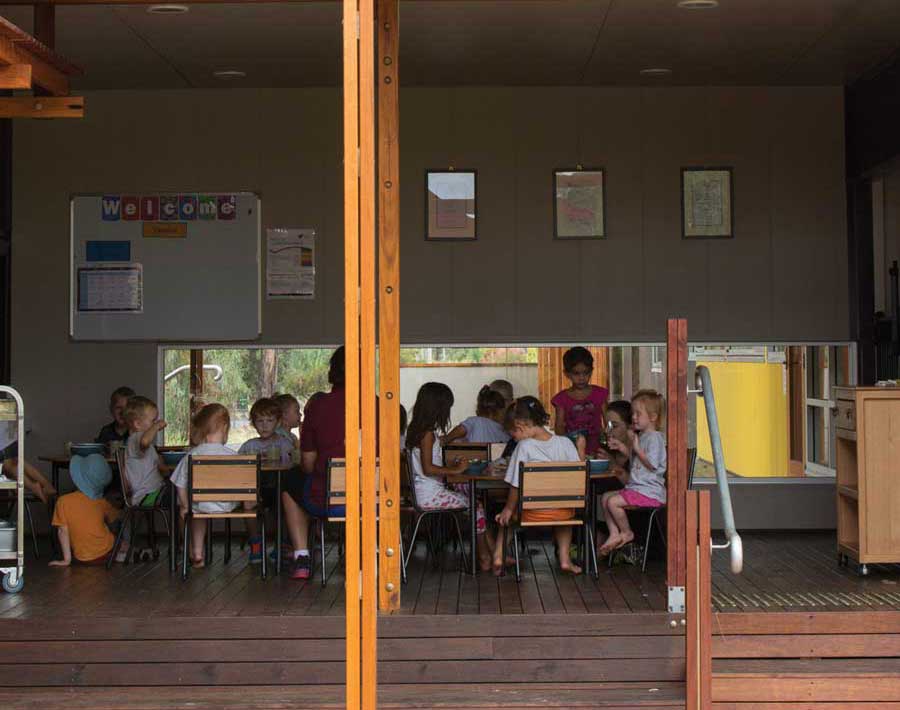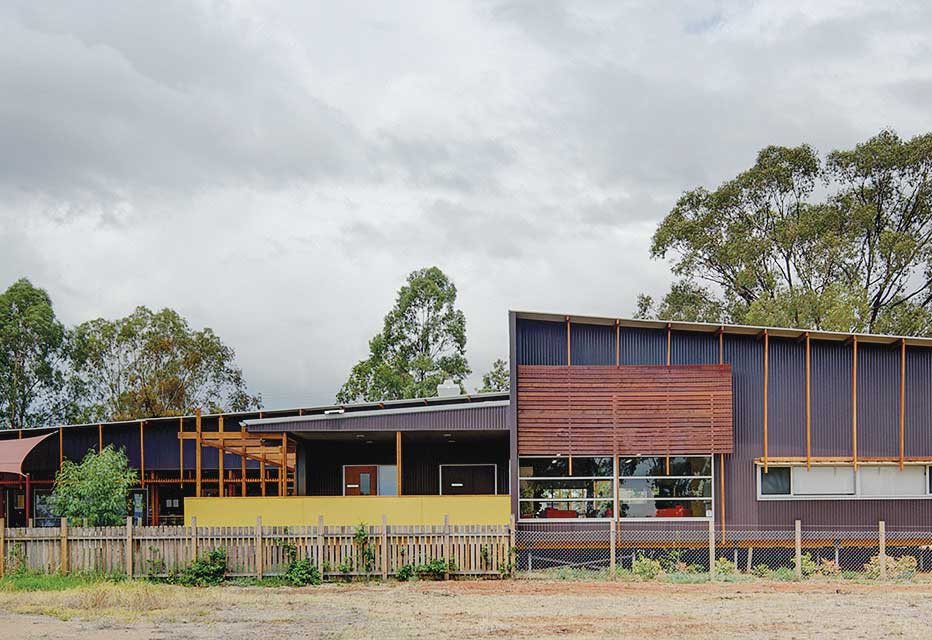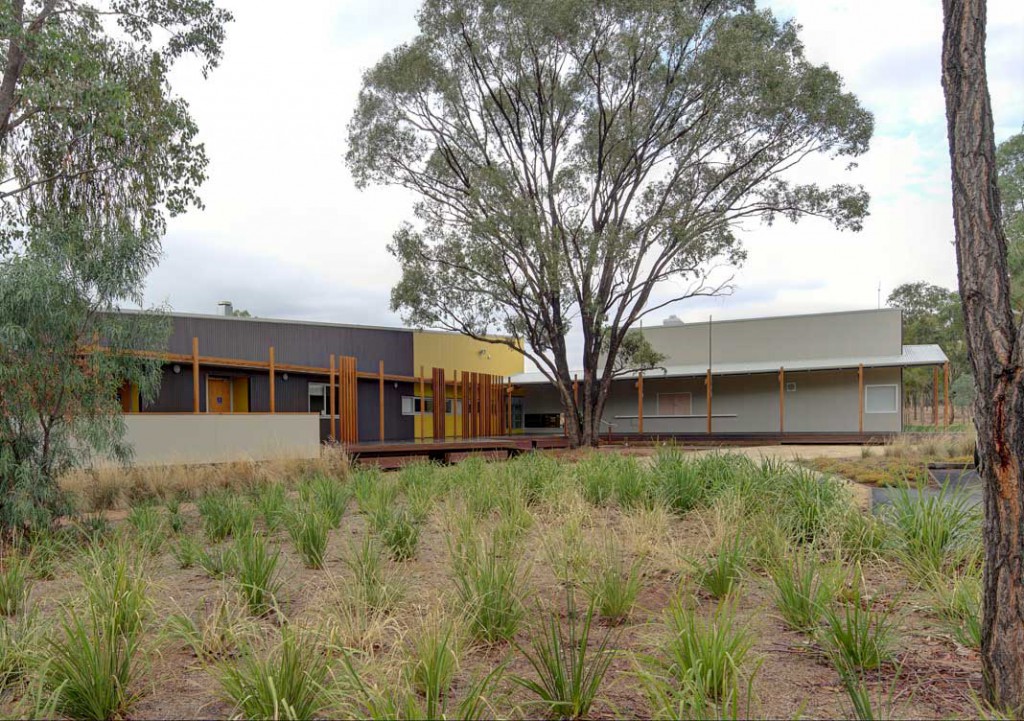



table of contents

previous articles

next articles
Feature article



CONTENTS
- NSW Aboriginal Child and Family Centre Gunnedah, NSW Government Architect’s Office. Photo: Brett Boardman
Closing the Gap in Country
The Aboriginal Child and Family Centre building program, facilitated by the NSW Government Architect’s Office, is championing the role of architecture in supporting regional communities. Dillon Kombumerri and Cathy Kubany discuss their latest award winning project.
With next year’s International Architecture Biennale in Venice bringing attention to the widening gap between architecture and society there is growing concern that architecture is losing relevancy –as Alejandro Aravena proposes, “architecture has in recent decades been transformed into spectacle on the one hand, yet made dispensable on the other”.1
In light of this critique, the recent efforts of the Government Architect’s Office (GAO) in regional NSW provide an interesting juncture of design, function and community. In 2011 the GAO was engaged by Family and Community Services to develop design guidelines for a unique program of Aboriginal Child and Family Centres (ACFC) within NSW. This program was to be used as an essential tool for Aboriginal community consultation, brief definition and to benchmark design concepts.
The six ACFCs designed by GAO that followed are a result of the 2008 Closing the Gap initiative, a strategy that aims to reduce Indigenous disadvantage with respect to life expectancy, child mortality, access to early childhood education, educational achievement, and employment outcomes. This strategy was pivotal in overcoming shortfalls of past one size fits all government interventions.
As part of this building program, Indigenous team leader Dillon Kombumerri, established a collaborative design studio which included both Indigenous and non-Indigenous project architects. In order to provide a trusted first contact with the Local Reference Groups (LRGs) the GAO’s Michael Mossman, also of Indigenous heritage, acted as the LRG liaison contact – an important initiative to recognise the particular communication needs of the various communities involved.
One product of the program is the Gunnedah ACFC, designed by the GAO’s Cathy Kubany which won this year’s Blacket Prize. The centre is named Winanga-Li, a Kamilaroi word meaning to hear, to listen, to remember. Reflecting this ethos the centre provides an early start diagnosis service with access to a range of specialists; it serves the Indigenous and mainstream community. The service includes parent education, family support, health programs, cultural programs and referral to specialist services. The childcare centre is similarly open to the general public however it also incorporates traditional language and culture.
All six ACFCs have been designed with a strong reference to place within a culturally welcoming environment. One of the biggest challenges was overcoming an understandable level of scepticism that this project could deliver on its Closing the Gap aspirations given the well documented history of failed government interventions on similar initiatives.
Winanga-Li’s plan form took shape from reference to the Wallaby Trap, a landscape element beneath Porcupine Hill, which features in local Indigenous history. The topography of sacred hills erupting from the surrounding plains nearby has been reflected in roof forms and exterior building colour. The entry forecourt encloses an existing tree which harbours a yarning circle. The central social and information community hub forms the main entry and is located between the childcare and family health facilities. The building is oriented north, overlooking dressage arenas located next to the showground and a community garden.
Acknowledgement to community has seen the incorporation of a gathering/yarning area defined by the poplar leafed eucalypt at the front. This tree offers shade and temperature moderation in what can be a scorchingly hot climate. There is a level of connectedness between the facilities for both childcare and family health and the entry allowing viewing in and out. The childcare kitchen also opens to the front decked area to cater to gatherings and celebrations. The community gathering areas can also operate when the centre is closed. The hub connection between childcare and family health facilities is an important focus, not only securing access to the childcare, but a place where information about services and programs is disseminated. This is also a place of celebration and display of local indigenous cultural items. A magnificent possum fur cloak, still used in naming ceremonies is exhibited within the family health centre.
The childcare playrooms have been designed to open to generous north facing verandahs and outdoor play areas. The verandah has been enhanced with coloured blades at ceiling level. Where possible windows have been set at child-height so that the children can engage with the comings and goings of the centre and community gathering spaces. Conversely visitors can view into the childcare area.
A humble budget resulted in a strategy to reinvent traditional low cost construction materials and methods to deliver a welcoming, simply but thoughtfully detailed, purpose designed non institutional building. It is domestic scale constructed of lightweight materials maximising use of local products where possible. Available materials – timber framing, metal and fibrous cement cladding and metal roofing – have been creatively used to provide shade and colour.
A significant component of Closing the Gap is to achieve commitment and buy in from the local community. The GAO worked to achieve genuine grass roots consultation throughout the design process. At times this required the project architect to step aside and provide opportunities for the local community to control decision making. For example, in the case of Winanga-Li the LRG controlled furniture selection and purchase from local suppliers – a service which the GAO would normally include. Winanga-Li is also separately managing procurement of additions to accommodate additional functions of out of hours school care. This is seen as an affirmation of confidence through community ownership.
The success of any project is only as good as the team involved. The GAO was very fortunate to be able to collaborate with the local community led by Wayne Griffith, the local Elder and Manager of Winanga-Li, and the Department of Family and Community Services project manager Lance Bright. Griffith recently commented on the local community’s embracing of the Gunnedah ACFC, “ [it] has certainly met the brief of becoming a place of belonging for our Kamilaroi children and their families … In the seven months since we commenced operating, we have supported over 300 community members, formed over 30 formal and informal partnerships with service providers most of whom work out of our centre, and our early learning and child care service has been fully enrolled and has a waiting list – clear evidence that the centre is accepted by our community.”
Cathy Kubany, Project Architect and Dillon
Kombumerri, Expertise Leader Architectural Services
Government Architect’s Office 
FOOTNOTES
- Alejandro Aravena (by AD editorial team), Arch Daily, 18 July 2015

















